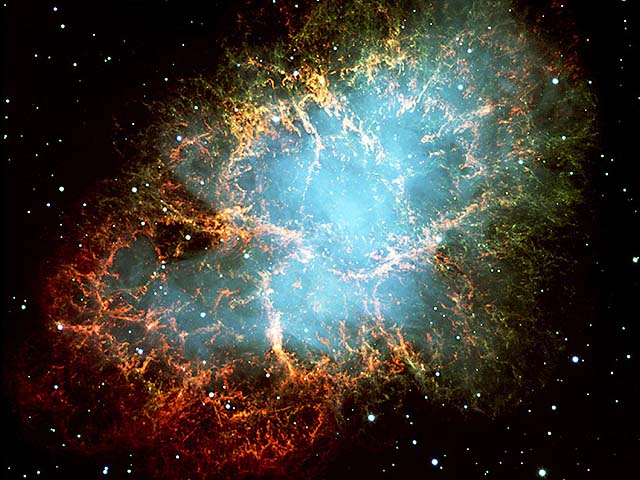What is a supernova?
A supernova is a massive explosion resulting from the death of a star more than ten times bigger than our own Sun. When huge stars run out of fuel they collapse under the infuence of immense gravitational forces. This dramatic collapse takes less than a second and causes the release of an enormous amount of energy, equivalent to the energy produced by 100 Suns during their life time of about 10 billion years.

We can sometimes see a supernova in the night sky. Such events glow bright for many days, months or even years. Many supernovae are discovered every year but supernovae that can be viewed without a telescope are rare. What can we learn by studying supenovae? By studying the light that comes form bright supernovae we can determine how fast galaxies are moving away from us due to the expansion of the universe. From this information we can determine how much matter there is in the universe and therefore determine its ultimate fate. You see, the more matter present the more likely that the universe will stop expanding, as a result of the Big Bang, and collapse back on itself. Perpetual expansion will only occur if there is not enough matter in the universe.
View the video on the left.
What is the major fuel of a star?
Which process takes place in the core of a star that generates immense heat?
What happens when
the star runs out of fuel?
At what point are elements heavier than helium but lighter than iron formed?
The most energetic, singal event in the universe is known as a
Heavy elemnts such as uranium and gold are formed during
Describe
what happens to a small star and a large star at the end of their lives.